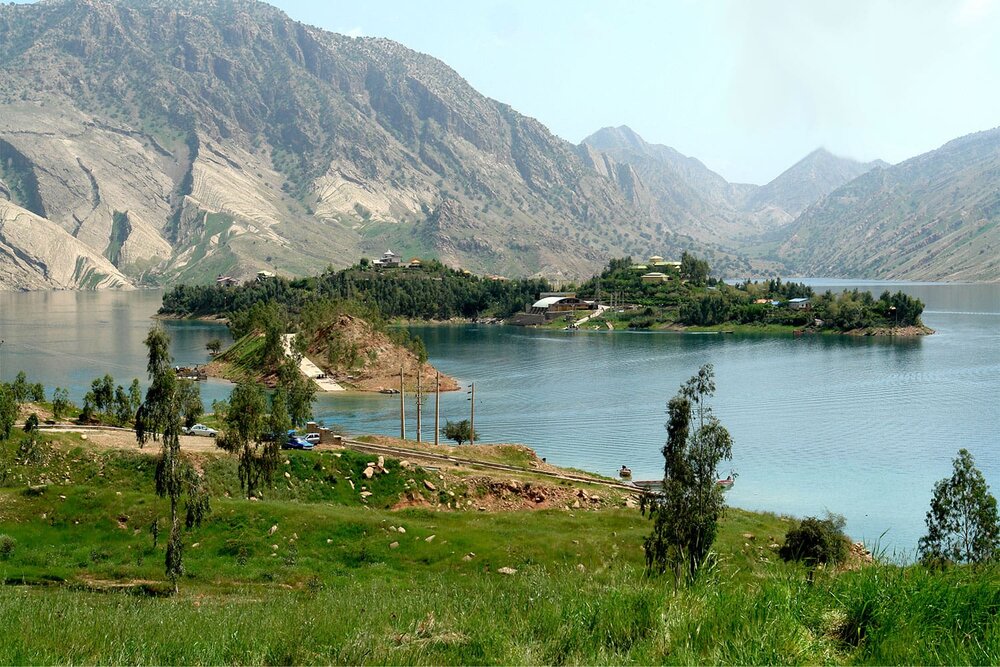22% of renewable water resources lost in 30 years

TEHRAN – Iran’s renewable water resources have decreased from 130 billion cubic meters to about 102 billion cubic meters in less than 30 years, showing a 22 percent decline, deputy minister of energy for water and wastewater, has said.
If the current trend continues, the country will lose five billion cubic meters of renewable water resources annually, which means that the water resources will be halved by the next 10 years, IRNA quoted Qasem Taqizadeh as saying on Wednesday.
Therefore, there is no other way but the optimal use of water in all sectors and the use of wastewater, he suggested.
The country's water resources must be managed on the basis of a document on adaptation to water scarcity, which has been prepared in cooperation with all water-related sectors, including the Ministry of Agriculture, the Department of Environment, the Ministry of Industry, and the Meteorological Organization.
The document emphasized that 9 billion cubic meters of groundwater consumption and 3 billion cubic meters of surface water consumption should be reduced in five years, so that, it will be possible to prevent subsidence and aquifers depletion.
The emphasis is mainly on the cultivation pattern, optimal water consumption, water diplomacy, prevention of water wastage, the establishment of a fund to help the villagers in drought-ridden areas, and the replacement of wastewater with water in the industrial sector.
Groundwater resources declining
A recent report by Nature Scientific Journal on Iran’s water crisis indicates that from 2002 to 2015, over 74 billion cubic meters have been extracted from aquifers, which is unprecedented and its revival takes thousands of years along with urgent action.
From 2002 to 2015, over 74 billion cubic meters have been extracted from aquifers, which takes thousands of years to revive. Three Iranian scientists studied 30 basins in the country and realized that the rate of aquifer depletion over a 14-year period has been about 74 billion cubic meters, which is recently published in Nature Scientific Journal.
Also, over-harvesting in 77 percent of Iran has led to more land subsidence and soil salinity. Research and statistics show that the average overdraft from the country's aquifers was about 5.2 billion cubic meters per year.
Mohammad Darvish, head of the environment group in the UNESCO Chair on Social Health that the situation of groundwater resources is worrisome.
The report notes that Iran’s water consumption has increased due to a significant increase in legal and illegal wells, the expansion of agricultural land, and increasing livelihood dependence on water and soil resources in agriculture, livestock, and poultry, which are mainly caused by human factors, Darvish noted.
The statistic is unprecedented, as the total reservoirs of all dams in the country have a capacity of about 50 billion cubic meters; In other words, in the last 14 years, 22 billion cubic meters more than the capacity of all dams have been extracted from the country's underground sources, he explained.
Drought impacts on human societies
The drought consequences will be very severe, and as long as we do not manage water consumption, we will attack groundwater resources. All the lakes, rivers, and wetlands of the country have environmental water rights, but in drought conditions, it is always natural ecosystems that are neglected and their water rights are not paid.
In drought conditions, the water right of rivers and wetlands must be granted, but not only does this not happen, but the water goes to agricultural lands where water-intensive crops such as onions and watermelons are grown. Therefore, water resources are wasted, because the Ministry of Agriculture has not succeeded in implementing the cultivation pattern.
Iran is a country where rainfall is one-third of the world average and has gone through many periods of drought throughout history, some of which have led to famine.
However, employment in the country is water-based and based on agriculture. However, due to the dry climate of the country, we should have used the tourism and handicraft capacities of local communities, but unfortunately, we have put all our energy and capital into the agriculture sector.
During the severe drought of this year, the possibility of migration from rural to urban areas and from southern to northern provinces will definitely increase.
FB/MG
